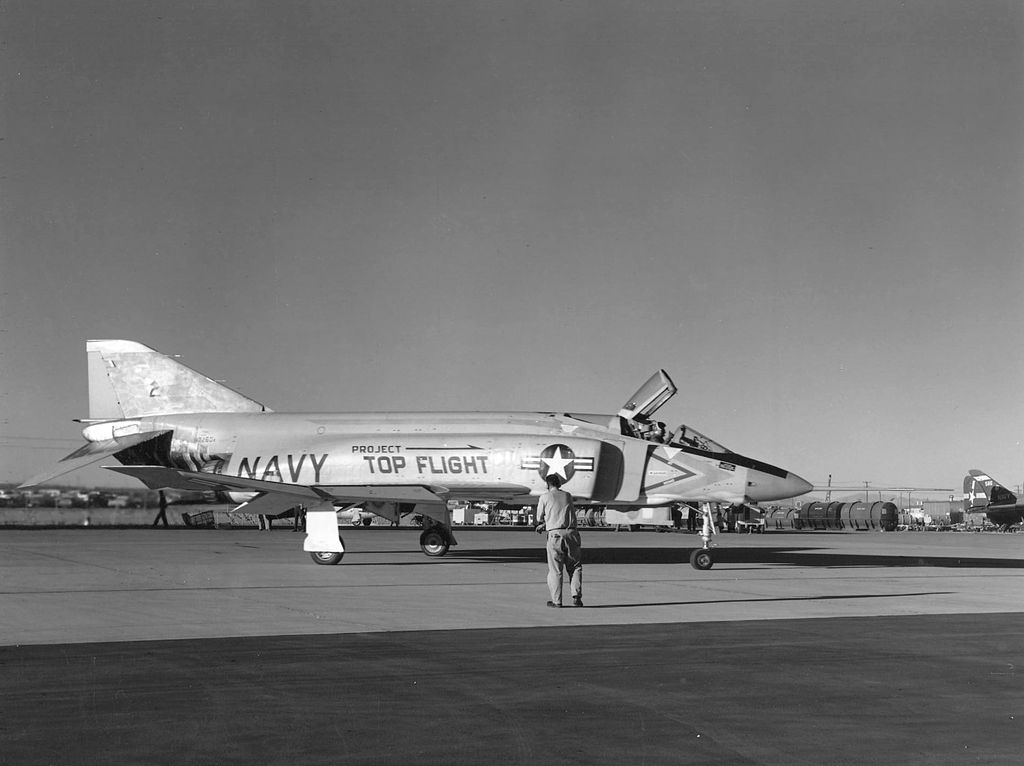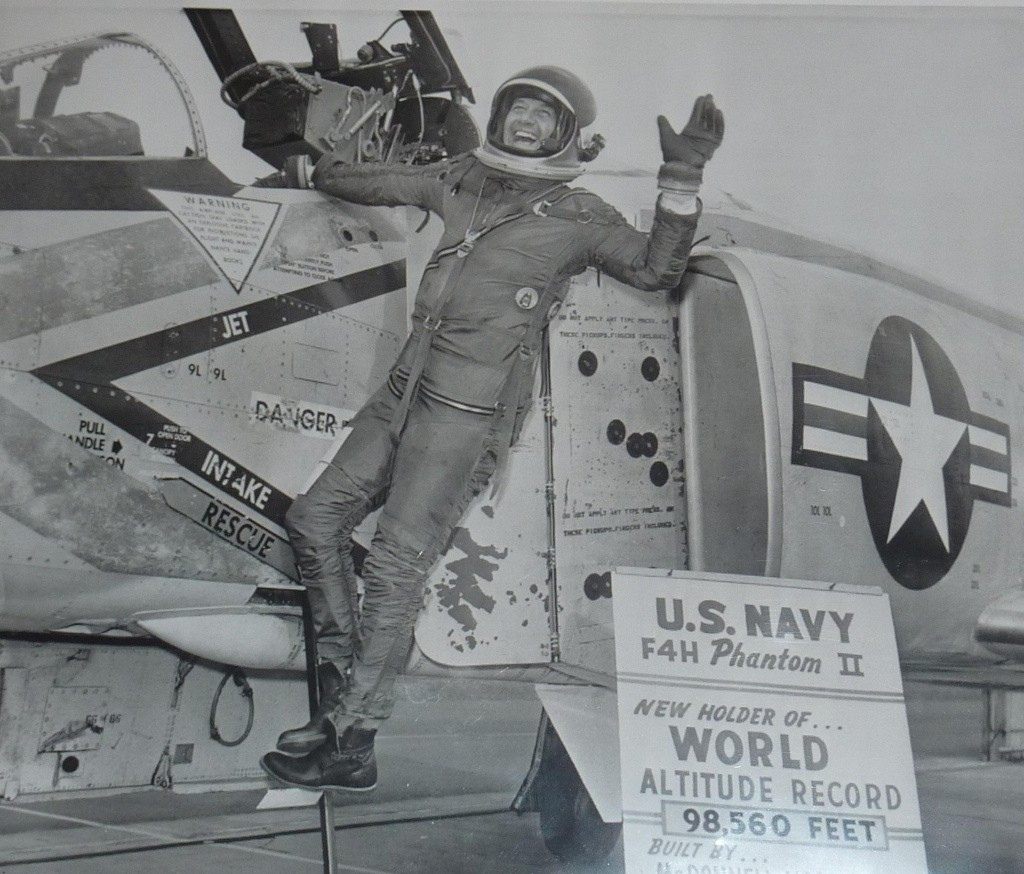CDR Lawrence E. Flint piloted the second Phantom II prototype (BuNo 142260) for Project Top Flight between October and December 1959 in a series of twelve ballistic zoom climbs from 50,000ft at maximum power
One of the most versatile fighters ever created was the McDonnell two-place, twinjet, all-weather F-4 Phantom II, with top speeds exceeding twice the speed of sound. More Western air forces used it than any other plane in the front line. The F-4 was the fastest, highest-flying, and longest-range fighter in the U.S. Navy’s arsenal just 31 months after its initial flight. On May 27, 1958, it had its maiden flight; it went into service in 1961.
The twelfth aircraft off the line (BuNo 145311) was officially devoted to Aircraft and Engine Performance. In practice, this meant the World Speed Record program. Spurred by the results of the second stage of NPE (Navy Preliminary Evaluation) in July 1959, the Navy naturally wanted to put the F4H-1’s spectacular performance in the record books.
Gerald Huelsbeck, a company test pilot, tragically lost his life during the first attempt at a world altitude record, Project Top Flight, when the first prototype lost its engine access door during a high altitude zoom climb beyond Mach 2, causing the aircraft to catch fire and crash. Unbearable g-forces forced “Zeke” Huelsbeck into the cock pit where he was held captive.
The second prototype (BuNo 142260) was fitted with water injection and flown by CDR Lawrence E. Flint in a series of twelve ballistic zoom climbs from 50,000 feet at maximum power between October and December 1959, according to Peter E. Davies’ explanation in his book Gray Ghosts, U.S. Navy and Marine Corps F-4 Phantoms. Radar and other non-essentials were removed from the plane, along with the back seat. Higher thrust was achieved by adjusting the afterburner nozzle settings, fuel flow rates, and engine speed. Just before entering Edwards AFB airspace and pulling up for the 3.5g, fifty-degree zoom climb to be measured, CDR Flint attained speeds as high as Mach 2.41.
Fuel flow was reduced to avoid overheating as the afterburners “blew out” from a shortage of oxygen over 65,000 feet toward the top of each vertical climb. Darkness was so thick in the clean, unpolluted air that Flint could not see the dials at all when his shadow fell on the instrument panel. At the peak of the zoom, the aircraft’s engines were turned off, its speed decreased to about 45 mph, and it started a dive to a height of 45,000 feet before pulling out into controlled flight.
The heat produced on Flint’s low-altitude run-in had peeled off much of the aircraft’s orange paint by the time it touched down. The heat also warped the outer windscreen panels.

On one flight, CDR Flint was unable to turn off the right engine until it had reached 120 percent of its rpm and the TOT had gone off the scale. Luckily it held together, and on post-flight inspection, it was found that up to half an inch had melted off the outer end of each turbine blade.
The Project’s maximum altitude was 98,557 feet on December 6, 1959, but a USAF F-104C broke this record before the year was out.
These amazing flights served as dramatic evidence of the new aircraft’s capability as a high-altitude interceptor to a potential opponent.
Since 1944, Larry Flint has been a test pilot. He later rose to the position of chief test conductor for the Apollo space program and manager of the F-14 Tomcat Aircrew Training Program for the USN and Iranian Air Force. Flint also served as the commander of VF- 11 Red Rippers during the Korean War.

Photo by U.S. Navy

